 Petzlover
Petzlover Dilute Calico is originated from Egypt but Skookum is originated from United States. Both Dilute Calico and Skookum are having almost same weight. Dilute Calico may live 5 years more than Skookum. Both Dilute Calico and Skookum has almost same litter size. Dilute Calico requires Moderate Maintenance. But Skookum requires Low Maintenance
Dilute Calico is originated from Egypt but Skookum is originated from United States. Both Dilute Calico and Skookum are having almost same weight. Dilute Calico may live 5 years more than Skookum. Both Dilute Calico and Skookum has almost same litter size. Dilute Calico requires Moderate Maintenance. But Skookum requires Low Maintenance
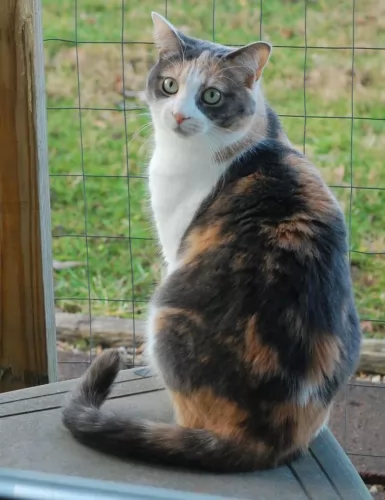 The Calico isn’t a breed of cat but is describing a color and pattern of the cat. Many breeds of cats can be calico, and ‘Dilute Calico’ simply means that the color of the cat is less intense.
The Calico isn’t a breed of cat but is describing a color and pattern of the cat. Many breeds of cats can be calico, and ‘Dilute Calico’ simply means that the color of the cat is less intense.
An example of this would be cream being the dilute shade of red, almost like strawberry blonde. People interested in the origins of the cat trace its history back to the trade routes in Northern Africa and Europe, and more specifically to the port cities along the Mediterranean Sea.
A Calico cat is described as having 3 colors - white, black, and red and Dilute Calico cats have ‘toned down’ shades of these 3 colors.
 Skookums are a new cat breed – an experimental and rare hybrid dwarf cat breed, It was developed in the United States in the 1990s.
Skookums are a new cat breed – an experimental and rare hybrid dwarf cat breed, It was developed in the United States in the 1990s.
As a new breed, you’re not going to find too much information on their history, but is was breeder Roy Galusha who started crossing the Munchkin cat with the LaPerm.
Even today, some years later, the Skookum cat is still an experimental cat breed that is considered a rare dwarf breed. It is recognized as an Experimental breed by Independent European Registries as well as the Dwarf Cat Association.
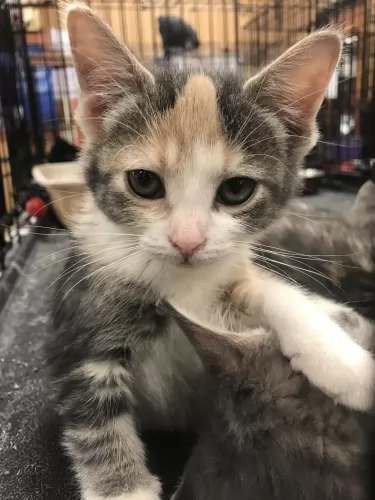 These are beautiful cats that can essentially have any size and shape and can weigh between 3 and 6kg. Their coat too can be in different colors and patterns and these don’t have any effect on the cat’s persoality.
These are beautiful cats that can essentially have any size and shape and can weigh between 3 and 6kg. Their coat too can be in different colors and patterns and these don’t have any effect on the cat’s persoality.
Your Dilute Calico can have a short- or long-haired coat. Also, because the dilute calico coloring isn’t linked to any particular cat breed, these cats can be any size or shape really.
They are also nearly always female. Remember that while genes do have an effect on how your Dilute Calico looks and behaves, socialization plays a big part, and where possible, to get your cat from a reputable breeder.
Because calico cats are a coat-color and not a breed, you can find long hair dilute calico cats. The personality of the Dilute Calico is described as colorful as well as they’re fun-loving, independent, spunky cats that are sweet and loving too.
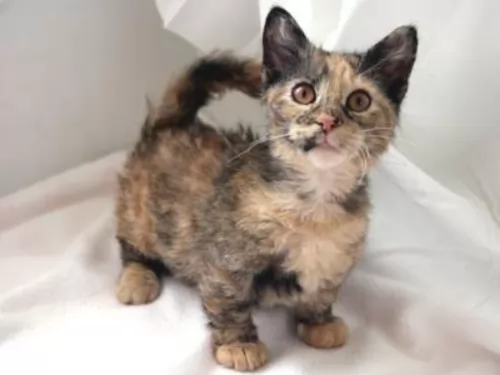 The dwarf Skookum only weighs between 2 and 3kg. It is a new cat breed with a curly coat. The coat can be in a range of colors and patterns.
The dwarf Skookum only weighs between 2 and 3kg. It is a new cat breed with a curly coat. The coat can be in a range of colors and patterns.
It is a small, lightweight cat with short legs and a broad head and stocky build. It has a muscular build. The eyes are large and walnut- shaped while the ears are large and pointed.
The neck is also thickish. The coat is soft and curly, standing away from the body and spiraling into ringlets. It can feature a number of colors and patterns such as solid, bicolor, and colorpoint. These cats can be long-haired or short-haired.
They are playful cats, full of energy and they love climbing and jumping. They’re intelligent, confident cats and are also loyal and loving towards their human family. They may be active, playful cats, but they still like to settle down into your lap.
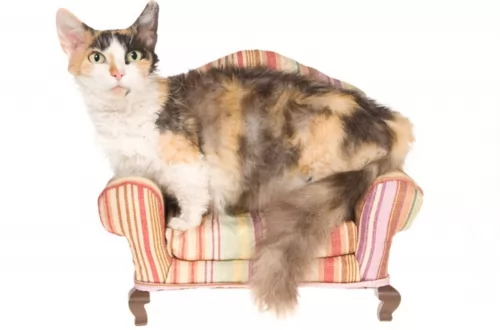 Because the Skookum cat is still in its early stages of development if you want to know precisely what the characteristics of the cat are you would want to look at the Munchkin and the LaPerm cat.
Because the Skookum cat is still in its early stages of development if you want to know precisely what the characteristics of the cat are you would want to look at the Munchkin and the LaPerm cat.
One thing is sure the Skookum cat thrives on the attention of his human family and if you provide him with the love and attention he craves, you can be sure that he will turn out to be the right friend and companion for your family.
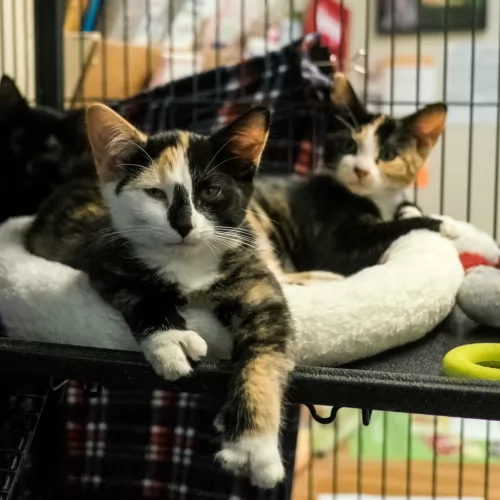 As already mentioned, the Dilute Calico isn't a specific breed but rather a color. The calico can be any breed. The average lifespan of any cat is 12-16 years. The males are far rarer than the females and they live shorter lives.
As already mentioned, the Dilute Calico isn't a specific breed but rather a color. The calico can be any breed. The average lifespan of any cat is 12-16 years. The males are far rarer than the females and they live shorter lives.
Cancer is a terrible disease in cats and dogs and it is where cells grow uncontrollably, spreading to all areas of the body. For any sign of illness in your Dilute Calico, get him to the vet.
Make sure your cat is vaccinated against the deadly cat diseases there are such as Feline Immunodeficiency Virus (FIV).
Both males and females can develop lower urinary inflammation, which is also called Feline Lower Urinary Tract Disease (FLUTD). You’ll notice your pet straining to urinate. It’s time to get your pets to the vet with this terrible illness.
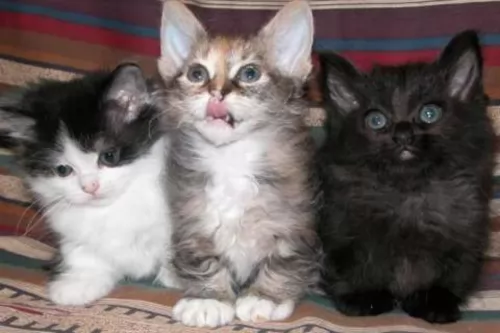 Because the Skookum cat is a new, experimental breed, health problems with the cat are not well known. However, every cat can succumb to some of the common cat health issues there are. As a pet owner you want to watch for and recognize signs that your cat’s health is in trouble.
Because the Skookum cat is a new, experimental breed, health problems with the cat are not well known. However, every cat can succumb to some of the common cat health issues there are. As a pet owner you want to watch for and recognize signs that your cat’s health is in trouble.
Feline leukemia for instance is a disease that spreads through bodily fluids such as urine, saliva and nose discharge, and saliva. Mother cats can even pass the disease along to her kittens. Feline leukemia can also lead to a host of conditions such as diarrhea, respiratory tract infections, skin problems and eye diseases among others.
Feline panleukopenia is known to most people as feline distemper and it is a very contagious viral disease with kittens being most at risk.
The disease affects a cat's immune system and the cat will likely have diarrhea, vomiting and dehydration, and lethargy. It’s a deadly disease that requires a vaccine to prevent it.
 Prepare for your cat – have food dish, water bowl, litter box, cat food, brush, climbing tree, scratching post, cat toys, and cat bed to welcome your pet.
Prepare for your cat – have food dish, water bowl, litter box, cat food, brush, climbing tree, scratching post, cat toys, and cat bed to welcome your pet.
When it comes to commercially manufactured cat food, there are many excellent ones on the market and you can choose from dry and wet cat food. If in any doubt about what is best for your cat, speak to your vet. Your cat is a carnivore and will need food that pays special attention to meat. A kitten will require 4 small bowls of food a day and by one year of age your cat can be receiving 2 smaller meals a day. Provide cool, fresh water around the clock..
Brush your Dilute Calico gently once a week. Some of the longer-haired Dilute Calicos will require brushing twice a week. At this grooming time, check that the eyes are nice and clear, free of discharge, check that the inside of the ears are free of wax and dirt build-up and check inside the mouth that there aren’t any troublesome teeth.
Whether your cat is an indoor cat or he goes outside occasionally, check for ticks and fleas and get him to the vet to check for internal parasites. Your cat will need to be dewormed and to receive all his cat vaccines to avoid some of the deadly cat diseases there are.
If your cat does go outside, make sure he has a cat collar and an ID tag.
Keep the litter box hygienically clean as cats won’t use a messy litter box. You can buy small scoops and rakes from the pet shop and rake up his droppings throughout the day.
Always have your cat neutered or spayed as there are way too many unwanted kittens in the world. Having them ‘fixed’ reduces lots of illnesses such as urinary inflammation.
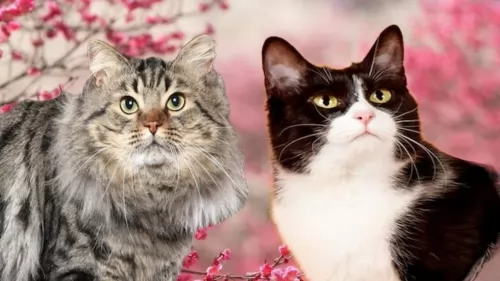 Even though the Skookum has curly hair, it’s not difficult to groom him. You want to brush the soft curls gently once a week. Keep it gentle so that you don’t make the curls frizzy.
Even though the Skookum has curly hair, it’s not difficult to groom him. You want to brush the soft curls gently once a week. Keep it gentle so that you don’t make the curls frizzy.
Use some warm water in a spray bottle with some pet conditioner and spray the curls lightly and use your fingers to liven up the curls.
Cats like to nibble throughout the day and it is better for them to feed like this as opposed to a larger meal morning and night.
However, you will need to know what your cat is eating as you don’t want to overfeed your cat. Obesity comes with a host of health issues. As a carnivore, your cat requires meaty foods so make sure to feed him high-quality cat foods that have meat and protein as the top ingredients.
Your cat must have a constant supply of fresh, cool water.
Provide your cat with a litter box. You will need to clean out the box every day of cat feces as cats don’t like to use a box that is dirty. You get special cat rakes at the vet or the pet shop that makes it easy just to rake up the feces and dispose of them.